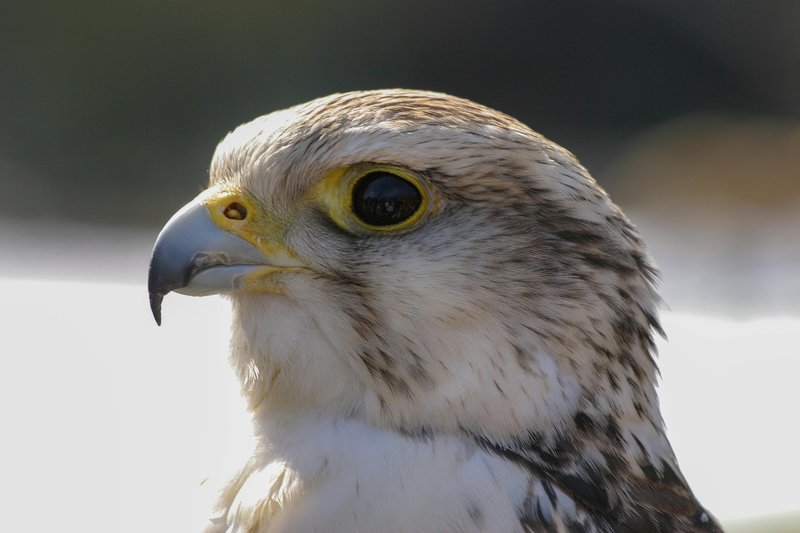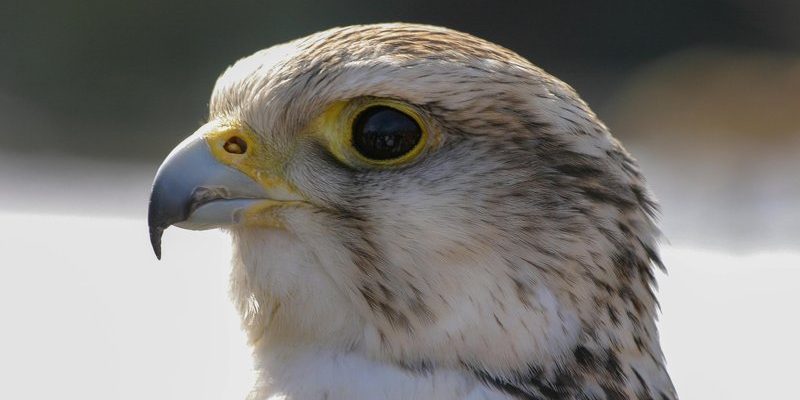
When we think about the gyrfalcon, we’re not just looking at a bird of prey; we’re diving into a story that spans thousands of years. This journey takes us from their ancestors – which once ruled the skies – to their current status as revered creatures of the north, deeply admired by falconers and bird enthusiasts alike. So, grab your favorite coffee, and let’s unravel the mysterious and exciting history of the gyrfalcon together!
Understanding the Gyrfalcon: A Unique Bird of Prey
The gyrfalcon isn’t just any bird; it’s the largest falcon in the world. Standing at about 18 to 24 inches tall, it has a wingspan that can reach up to 4 feet! You might be wondering, what sets it apart from other birds of prey? Well, for starters, the gyrfalcon comes in several color variations, including gray, white, and dark brown. This diversity in plumage helps them adapt to different habitats and hunting conditions, much like how humans wear different clothes depending on the season.
Gyrfalcons are primarily found in the Arctic regions, including parts of Greenland, Canada, and Alaska. Here’s the thing: their main food source consists of smaller birds, like ptarmigans, but they’ve been known to feast on anything from ducks to small mammals. Their hunting skills are impressive, showcasing their keen eyesight and incredible speed. Imagine darting through the air at speeds of over 40 miles per hour – that’s the gyrfalcon in action!
The breeding habits of gyrfalcons are equally fascinating. They typically build nests on cliff ledges, taking advantage of the high vantage point for spotting their prey. During the breeding season, they engage in impressive aerial displays to attract mates. These rituals involve swooping, diving, and even vocalizations that echo through the pristine Arctic air, almost like a dramatic performance in nature.
The Ancestry of Gyrfalcons: Roots in the Falconidae Family
To truly appreciate the gyrfalcon, we need to take a step back in time. Gyrfalcons belong to the *Falconidae* family, which dates back around 60 million years. This family tree includes various species of falcons, kestrels, and caracaras. The gyrfalcon’s closest relatives are the true falcons, which share certain characteristics, such as their pointed wings and fast flight.
You might be curious about how the gyrfalcon evolved over time. The evolutionary journey of these raptors likely began in warmer climates. As the Earth shifted, they migrated northward, adapting to the colder conditions of the Arctic. This is similar to how humans have adapted their lifestyles and technologies over millennia to survive in harsher environments.
Interestingly, the gyrfalcon’s ability to thrive in extreme conditions comes from its remarkable physiological adaptations. For example, they have strong leg muscles and robust feet, which are essential for gripping slippery prey in snowy habitats. Just like we wear insulated jackets to keep warm in winter, gyrfalcons have feathers designed to retain heat, allowing them to maintain body temperature even in freezing temperatures.
Gyrfalcons & Their Habitat: Surviving the Arctic Wilderness
The gyrfalcon is a true master of its domain, perfectly suited to the Arctic wilderness. These birds prefer vast, open spaces with cliffs and tundra, where they can easily spot their prey and establish nesting sites. Their adaptability allows them to thrive in extreme conditions where temperatures can plummet as low as -40 degrees Fahrenheit.
In this harsh environment, food availability fluctuates seasonally. Gyrfalcons have a fascinating way of coping with this challenge. They are known for their opportunistic feeding habits, which means they can change their diet based on what’s available. For instance, during the summer when bird populations swell, they’ll target smaller birds. In the winter, they might switch to hunting larger prey, such as hares or even carrion, when necessary.
Their hunting territory can span a considerable distance, sometimes over 200 square miles. Imagine roaming through stunning yet barren landscapes, always on the lookout for your next meal. That’s the life of a gyrfalcon! They are also skilled at navigating their environments, using their keen eyesight to spot potential prey from afar, much like a seasoned hunter scanning an open field.
The Role of Gyrfalcons in Culture and History
Gyrfalcons have captured the human imagination for centuries, playing significant roles in various cultures and traditions. In Viking societies, for instance, they were prized as royal birds. Falconry, the ancient art of training birds of prey, saw many noblemen keeping gyrfalcons as symbols of status and power. Imagine the thrill of taking a gyrfalcon into the skies, knowing it was a creature associated with nobility!
Interestingly, these birds have also influenced literature and art throughout history. From medieval manuscripts to modern photography, the gyrfalcon’s beauty and grace have inspired countless artists. Even today, they continue to be a favorite subject for wildlife photographers, as their striking appearance against the stark Arctic backdrop creates breathtaking images.
Moreover, gyrfalcons are often used in scientific research to understand ecosystem health in the Arctic. Their presence indicates a balanced environment, as they sit atop the food chain. Observing their behavior helps researchers gauge how climate changes and human activities impact Arctic wildlife. It’s like having a feathered barometer for environmental changes!
Conservation Status and Efforts for Gyrfalcons
Even though gyrfalcons have adapted to harsh environments over time, they still face threats from habitat loss and climate change. As their Arctic habitats become more vulnerable, conservation efforts have become essential. The International Union for Conservation of Nature (IUCN) lists gyrfalcons as “Least Concern,” but local populations can vary and need ongoing monitoring.
Here’s the thing: conservation groups are actively working to protect these magnificent birds and their habitats. Efforts include habitat restoration, public education, and scientific research. By raising awareness about the importance of gyrfalcons in their ecosystems, these initiatives help foster respect and appreciation for these resilient raptors.
Additionally, falconry continues to play a role in conservation. Some falconers participate in breeding programs to help maintain healthy populations. Imagine being part of a community that not only cherishes these birds but also contributes to their survival in the wild!
In the grand tapestry of nature, the gyrfalcon stands out as a remarkable storyteller, weaving a narrative of survival and adaptation. From their ancient ancestors in warmer climates to their current mastery of the Arctic wilderness, these birds have shown us just how resilient life can be. Their roles in culture, art, and conservation highlight their significance beyond mere biological interest.
So next time you look up and see a gyrfalcon soaring through the sky, remember that you’re witnessing a living piece of history. These birds not only symbolize strength and grace but also serve as a reminder of the beauty and fragility of our planet. By understanding their evolutionary history, we can appreciate all the more the importance of protecting their habitats and ensuring their future for generations to come.

